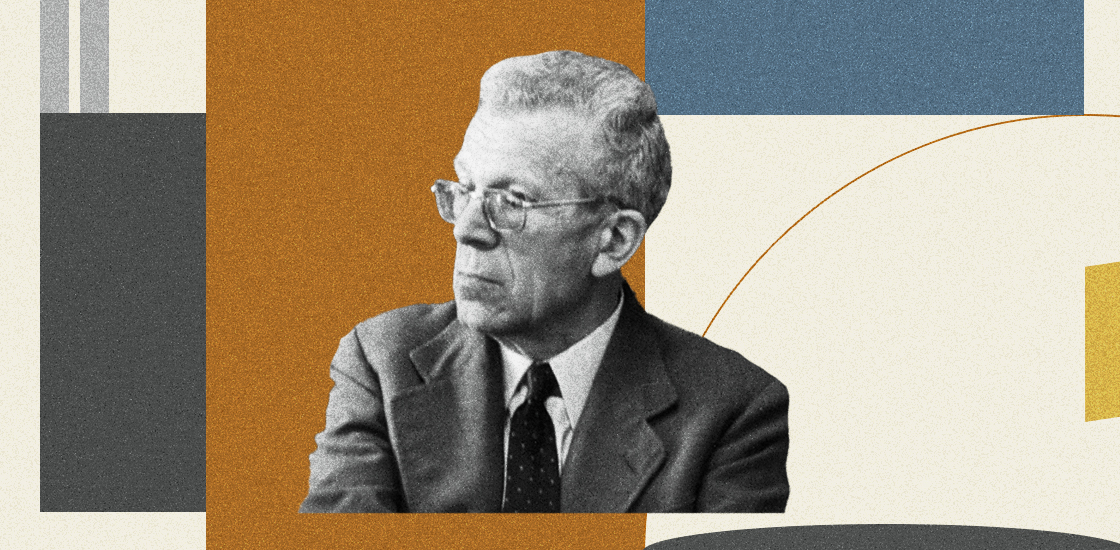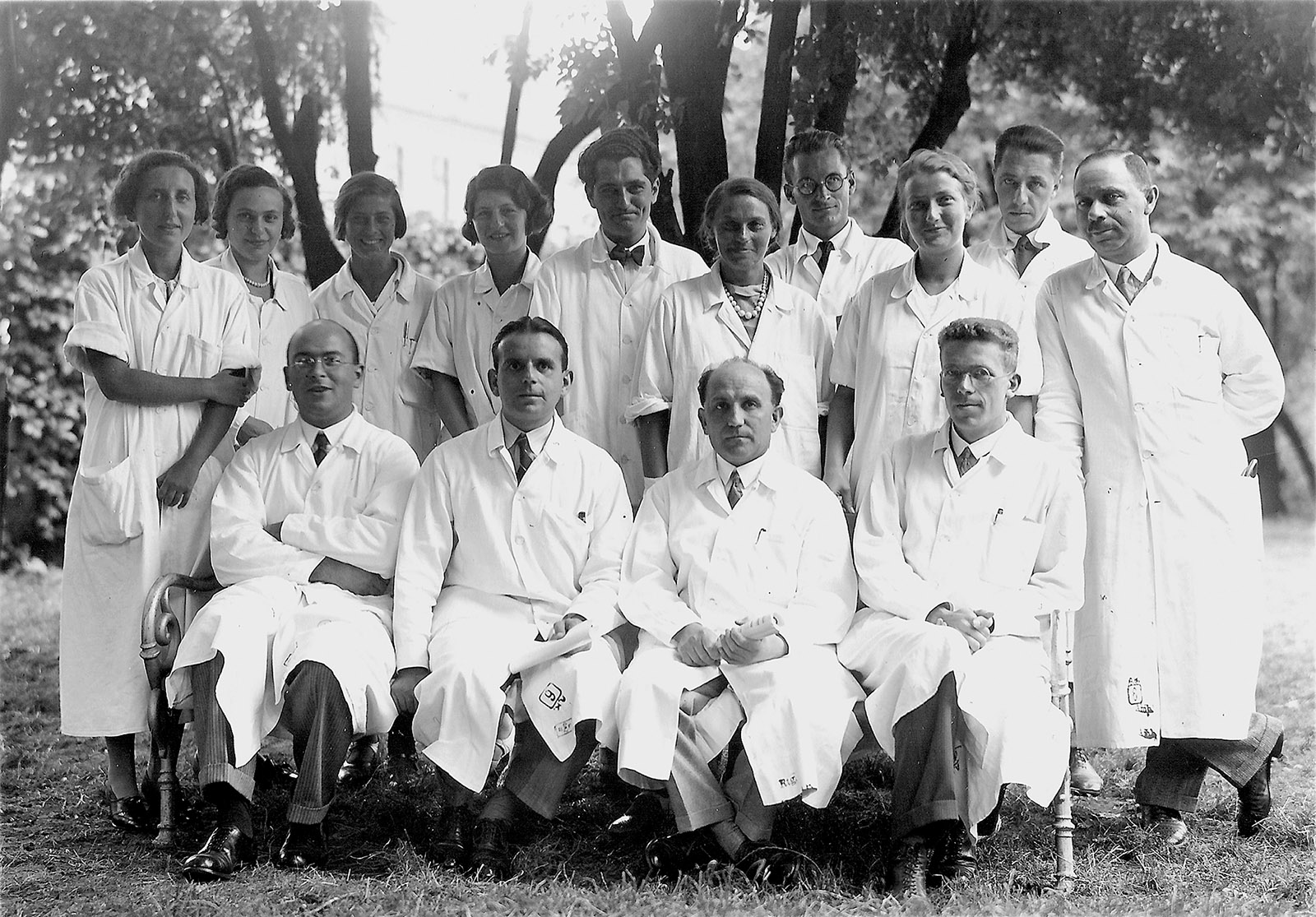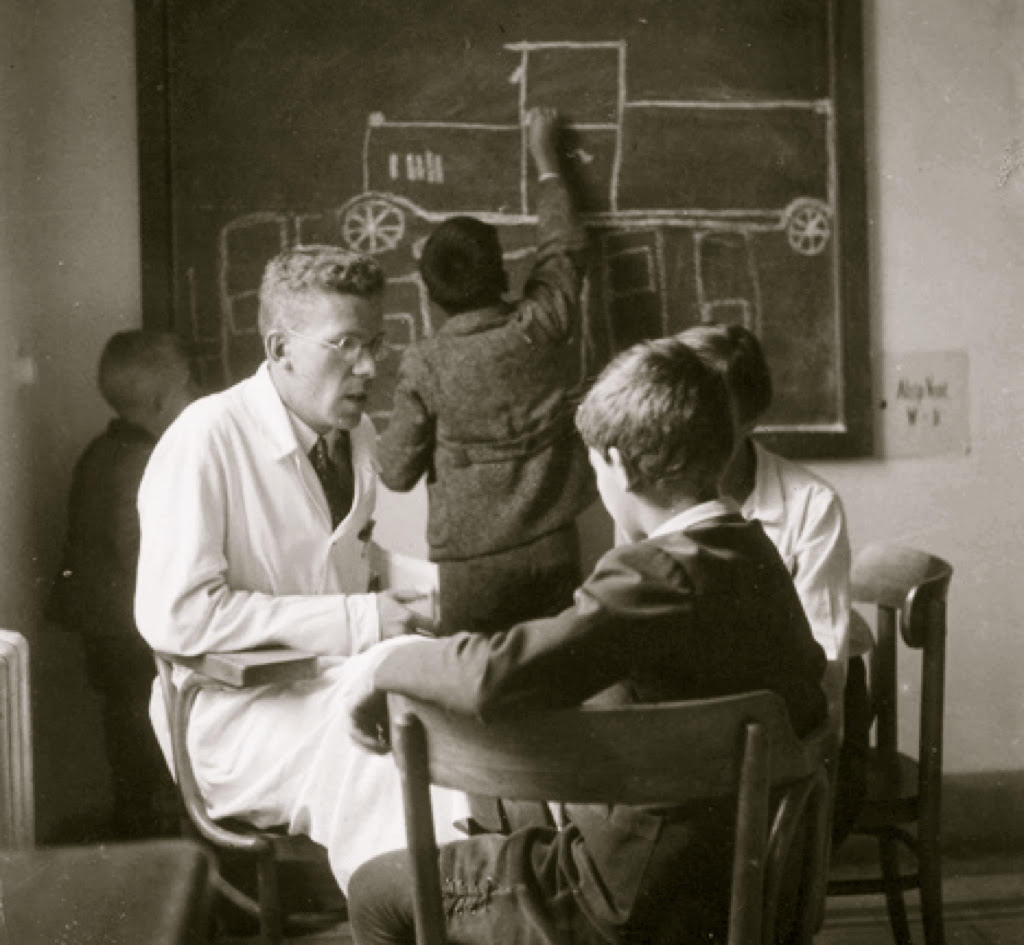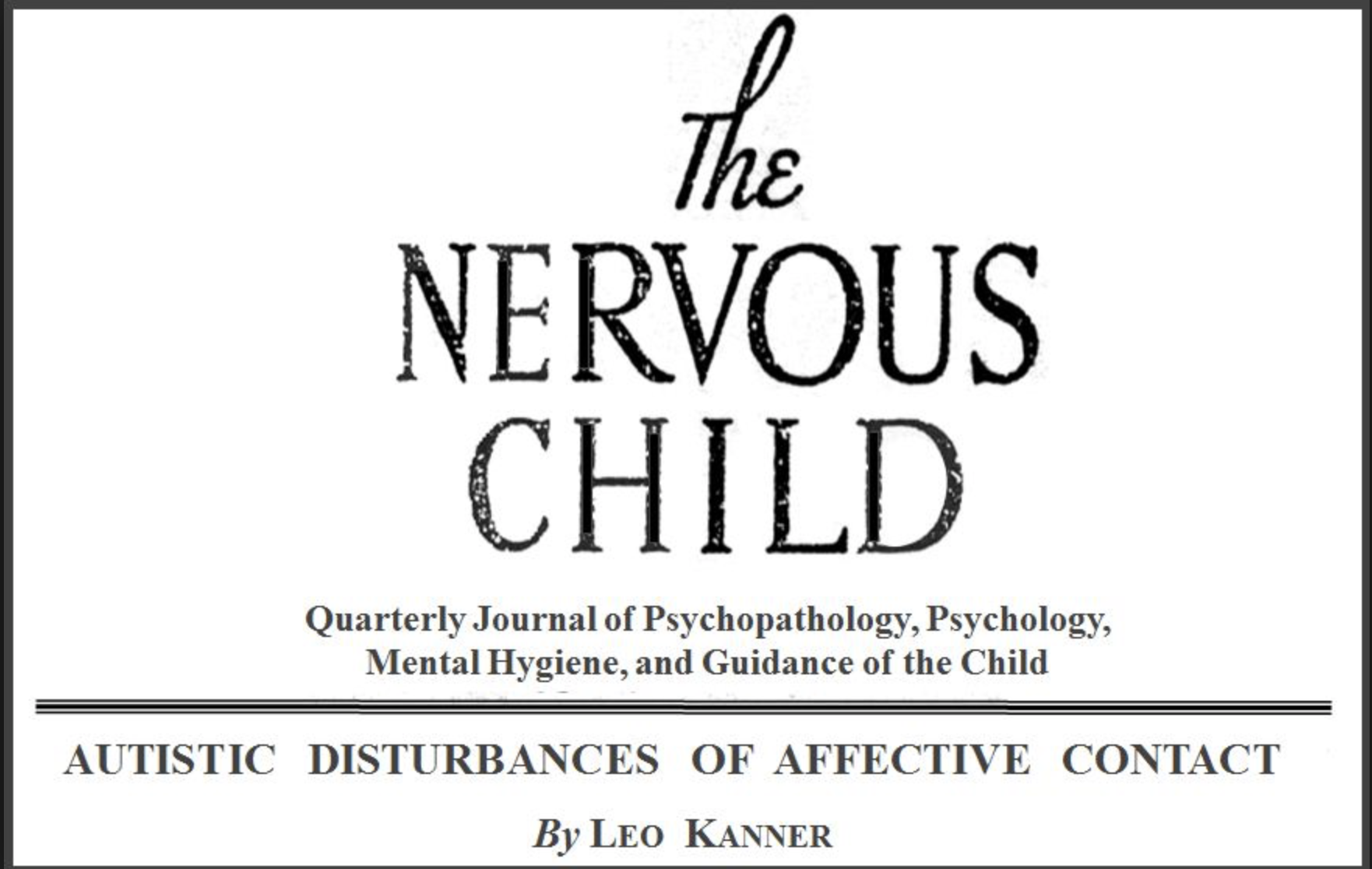Part I of this story published on Monday, 7 November.
The new history of autism, part II
For decades, two figures have dominated the history of autism studies. Today, newly excavated documents are calling into question the primacy of these men as founders of the field.

F
aint in the history of autism are the prints left by two other pioneers in early 20th century autism research who, Zelig-like, managed to be present in both Asperger’s and Kanner’s labs at critical points in those men’s work. Anni Weiss and Georg Frankl, both born in 1897, started their careers in the mid-1920s as key clinicians and researchers at a children’s psychiatric clinic at the University of Vienna. Weiss, who studied child psychology and social work, was there from 1927 to 1934; Frankl, a psychiatrist specializing in children’s issues, held a post there from 1925 to late 1937. Though their roles were critical to the identification of autism, their very existence was almost completely obscure until 2015, when journalist Steve Silberman and historian Stephen Haswell Todd, respectively and independently, discovered and then wrote of them in Silberman’s book 2015 best-selling “Neurotribes” and Haswell Todd’s 2015 dissertation, “The Turn to the Self: A History of Autism, 1910-1944.”The Heilpädagogik Children’s Clinic, founded and headed by psychiatrist Erwin Lazar, was one of Europe’s earliest and most innovative child psychiatry clinics. It had both a day clinic, which saw children referred from all over Austria, and a 21-bed inpatient ward — more like a boarding school, with staff so devoted they were like family — that treated and educated children who had psychiatric issues of research interest.
Asperger joined this clinic in 1932 as a freshly minted doctor. He completed his training under Lazar and Frankl, who was the only physician and psychiatrist on staff other than Lazar.
As front-line clinicians, both Weiss and Frankl had constant contact with the young patients. Along with a psychologist and a nun named Sister Viktorine, Weiss and Frankl wrote many of the patient-observation records that Asperger would draw on heavily in writing his pivotal 1944 paper. Of note, Frankl and Weiss also wrote papers on these patients that predated Asperger’s — Frankl in 1934 and Weiss in 1935.
Frankl’s paper focused on a dynamic that he spent the next decade exploring in ways that almost certainly influenced Asperger’s view. He first distinguished “word language,” words said aloud, from what he called “emotional language,” which encompassed tone of voice, body language, facial expression, general presence — everything beyond the actual words that communicate what someone is trying to say. When we listen to someone, Frankl wrote, we “acquire two different sets of information.” If a clinician hears a child’s description of a series of occurrences, for instance, “he learns what happened, the objective facts. At the same time, he recognizes how the child actually feels about these events, although [the child’s] feelings are not verbalized.” Yet some children (such as those Asperger would come to call autistic) process emotional language differently than non-autistic children do. Asperger later described how this other kind of processing required teachers and parents to present requests or orders with a lack of affect in their voices.

Neither Frankl’s nor Weiss’ paper attempted to define a new diagnostic category or syndrome. Yet both papers provided close, sensitive studies of a “type of child” they already seemed to know — characterized by what today would be seen as autism traits. And Weiss’ paper, in which she described the clinic’s testing method and what the tests revealed about the patient being discussed, was a veritable prototype, “in both form and substance,” as Haswell Todd observes, of the one Asperger wrote a decade later.
Frankl’s and Weiss’ papers also reflect an apparently staff-wide fascination with autistic children at a time when Asperger was looking to Frankl (and doubtless to Weiss as well) for guidance in making sense of them. At the clinic’s weekly staff meetings, these and other cases would have sparked discussions crucial to Asperger’s growing understanding of what he was seeing in some of the clinic’s young charges.
Possibly even more important, Haswell Todd argues, were the individual “pieces of description,” or “descriptive motifs,” that Viktorine, Weiss and Frankl used to portray these children. These motifs — noting the children’s social remove, lack of affect, desire for routine or peculiarities of language and intellect — implicitly outlined the distinctive traits Asperger (and Kanner) would later use to define the autistic “types.” Indeed, Asperger’s and Kanner’s papers both contain frequent and sometimes lengthy passages taken directly from patient records written by Frankl and Weiss. These excerpts, Haswell Todd asserts, represent not just the textual material of those papers but some of the conceptual building blocks Asperger and Kanner used to construct their theories about ‘autistic psychopathy’ and ‘infantile autism.’
How important were Frankl and Weiss to Asperger’s theory of autism? As suggested above, their contributions were easily large enough that, under today’s more inclusive standards of scientific and medical authorship credit, both would have been listed (along with Sister Viktorine and others) on the long, thorough and brilliant 1944 paper that made Asperger’s name.
Shortly after Frankl’s November 1937 departure, Asperger gave a talk in which he spoke about the “autistic psychopathy” he and his colleagues were seeing in a handful of young patients. He soon published it as “Das Psychisch Abnormale Kind” (“The Psychically Abnormal Child”). This was essentially a rough draft of his later paper, with key parts of the picture still missing. Yet it clearly marks a new direction in his thinking, one that would lead to the completion six years later of his dissertation, which would be published the following year.
Alas, Asperger’s paper lists no co-authors and only 13 references, most of them from giants in the field. This paucity of citations looks unseemly today, when a 54-page paper such as Asperger’s would typically have dozens of references and give co-author bylines to those who contributed patient data or key ideas. But this “was a time,” says Christine Borgman, director of the Center for Knowledge Infrastructures at the University of California, Los Angeles, “when it wasn’t uncommon for professors who headed departments to take credit for the department’s work and used the royal ‘we’” instead of identifying collaborators as co-authors. No matter how collaborative the actual work was, it was often a boss-takes-all game.
History, of course, would and did intrude. During that particularly fruitful time at the Lazar clinic, the Nazism that had been growing more prevalent in Austria increasingly made itself felt in universities. Anti-Jewish rhetoric grew ever more virulent. Universities began to refuse to hire or promote Jews such as Frankl and Weiss, and sometimes sacked them outright. In 1932, when clinic director Erwin Lazar died, the head of the hospital, an ardent Nazi named Franz Hamburger, replaced Lazar not with the highly experienced psychiatrist Frankl but with an immunologist, Valerie Bruck. When Bruck retired two years later, Hamburger tapped Asperger, then just 28 and on staff for only three years, to head the clinic, elevating him over Frankl. This promotion meant that when Asperger published his dissertation — for that was what his 1944 paper was — he did so not as an underling but as chief of the clinic. In the meantime, two of the people who had helped him most had moved on: Weiss left in 1934, the year of Asperger’s promotion, for the United States. Frankl followed not long after, resigning from the clinic in November 1937 to join (and marry) Weiss in New York.

The birth of Kanner’s autism:
Having left one of the most renowned child psychiatry clinics in Europe, Frankl landed in one of the most notable in the U.S., which had been founded and was presided over by 43-year-old Leo Kanner. Kanner, who two years before had published the textbook “Child Psychiatry,” was easily the most prominent child psychiatrist in the country. Like Asperger, he was from Austria-Hungary. He was born in 1894 in a Yiddish-speaking village on the border with Russia, in what is now Ukraine. At age 12 he moved to Berlin for school, but he suspended his medical studies when the army drafted him into World War I. He finished his medical degree in 1921 and in 1924 moved to the U.S. with his wife and daughter to escape the inflation and recession the war had triggered in Austria and Germany. Soon after, Johns Hopkins Hospital in Baltimore hired him to lead the Children’s Psychiatric Service, the country’s first child psychiatry clinic.
Kanner’s clinic in many ways resembled Lazar’s facility in Vienna. It had a day clinic that handled referrals from all over Maryland and beyond; an inpatient ward that took in some cases to treat, school and study; and a sharp, deeply engaged staff who got to know the children well and thoughtfully discussed and recorded their cases. Frankl, joining the staff in November 1937, made a major addition to this team. He worked alongside the unit’s senior clinical psychiatrist, Eugenia S. Cameron, to evaluate and then follow and write up some of the more difficult or intriguing cases.
These patients, as it happened, would soon include a 5-year-old boy named Donald T., who in October 1938 became the first of the 11 children whom Kanner described in his 1943 paper, “Autistic Disturbances of Affective Contact.” In the first sentence of that paper, Kanner pinpointed the year he and his staff first made note of these cases: “Since 1938, there have come to our attention a number of children whose condition differs so markedly and uniquely from anything reported so far, that each case merits — and, I hope, will eventually receive — a detailed consideration of its fascinating peculiarities.”
This sentence stands out for two reasons. The first is Kanner’s use of “our attention,” which implies or acknowledges that this was a team perception. Further, his mention of the year, 1938, marks the point when several factors might have coalesced to suggest that Donald T. had a syndrome that no one had ever heard of.
What was special about 1938? Both European and American child psychiatry had for several years been giving increased attention not just to Bleuler’s ‘autism,’ or separateness, but also to the growing and increasingly baggy diagnosis of schizophrenia, which included many people whom today would be diagnosed as autistic. It thus seems fairly likely that if neither Asperger nor Kanner had discerned and defined what became modern autism, some other midcentury child psychiatrist would have. This isn’t to say the air was filled with the notion of modern autism. But it held whiffs.
In October 1938, for instance, the same month Donald T. showed up at Kanner’s clinic in Baltimore, Asperger in Vienna gave and then published his previously mentioned talk describing “autistic psychopaths.” Given that both Vienna and Baltimore were then prime nodes in child psychiatry’s conference and professional networks, it is conceivable that Kanner (a native German speaker) could have received a description or even a copy of Asperger’s lecture.
Meanwhile, 1938 was Frankl’s first full year in the Kanner lab. And Frankl, having seen, written about and discussed with his Vienna colleagues the same children Asperger was seeing, presumably would have shared with his Baltimore colleagues memories or insights about those cases. After all, his wealth of experience was precisely what Kanner had hired him for. (This is not to say that Kanner lifted case accounts from Asperger. But Kanner’s mention of “a number of children” with autism traits coming to his attention in 1938 could have easily encompassed reports of cases from other clinics.) And at least three occasions for such conversations would come while Frankl was at the clinic. For in addition to Donald T., two more patients Kanner described in his paper arrived at his clinic during the three years Frankl worked there.
Finally, Frankl also brought to Baltimore something more tangible in 1938: the draft of a paper, “Language and Affective Contact,” which he eventually published in 1943 alongside Kanner’s paper on ‘infantile autism’ in Nervous Child. At least two scholars who have studied this period closely believe this manuscript profoundly shaped Kanner’s concept of autism.
“Language and Affective Contact” advances some of the concerns Frankl explored in his 1934 paper on ‘emotional language.’ Its last and most focused section centers on a boy named Karl K., almost certainly from Asperger’s lab, whose disregard for spoken and all other language had produced an apparently total “lack of contact with other persons,” cut off from the human connections built and maintained by full conversation or even mutual presence. He wandered around his schoolmates “like a strange being,” Frankl wrote, and “even when amid a crowd of people … behaved like a solitary person.”
All of Asperger’s staff, of course, and doubtless Kanner’s, too, had noticed that some of their young patients were remote and detached. But it was Frankl who put a term and a theoretical framing to that detachment by identifying a crucial connection between people — the almost unconscious exchange, communication and sharing of affective information — that seemed to be missing in these children.
Kanner was excited about Frankl’s idea of affective contact as early as 1938, when, as historian Haswell Todd describes, he wrote to neurologist Bernard Sachs: “I have become very much interested in a special and, I can say, original piece of work that Dr. Frankl is engaged in. I have gone over with him his formulation of the topic and was struck by its newness as well as soundness. The plan is concerned with a practical and concrete study of what Dr. Frankl calls the affective contact of children.” This concept, wrote Kanner, “opens a new, objective and practically useful avenue of approach.”
Haswell Todd argues convincingly that “the ideas that Frankl brought from Vienna — chiefly his own original concept of ‘affective contact’ — were critical in starting and guiding the research that led to Kanner’s epochal 1943 autism paper.” Kanner’s autism, he asserts, “was not discovered all at once” but built up from a combination of concepts and “descriptive motifs” from patient observations — and the foundational concept was Frankl’s notion of ‘affective contact’ as a vital feature disrupted in certain (autistic) children. Frankl saw this disruption create a distinctive type of social isolation; Kanner looked at a growing number of patients displaying that type of isolation, saw it often associated with repetitive behaviors and a desire for sameness (as documented by Frankl and others), and declared this combination “a highly specific and rare disorder.”
In 1941, The Nervous Child editors asked Kanner to create a special section for the journal, centered on his work. Kanner invited Frankl to contribute, urging him to submit his long-unpublished “Language and Affective Contact.” Kanner originally planned to have Frankl’s piece appear right before his own “Autistic Disturbances of Affective Contact.” But for reasons unclear, the order was reversed, with Kanner’s coming first — even though Frankl’s paper was both chronologically and conceptually its predecessor.
John Elder Robison, author of the autism memoir “Look Me in the Eye” and neurodiversity scholar-in-residence at the College of William and Mary in Williamsburg, Virginia, harbors no doubt that Frankl’s theory of affective contact played a central role in shaping Kanner’s theory of autism. In a sharp, well-documented 2017 paper in Autism, “Kanner, Asperger, and Frankl: A Third Man at the Genesis of the Autism Diagnosis,” Robison, like Haswell Todd, argues convincingly that the “disturbance of affective contact” that Kanner’s paper describes, having come to him from Frankl, was the kernel around which Kanner’s theory of autism coalesced.
As it happened, Frankl would largely abandon his work on autism after his and Kanner’s papers were published in 1943. Haswell Todd thinks Frankl may have already decided to abandon that work by the time Kanner invited him to submit his article to Nervous Child.

Why would Frankl wish to drop the subject of affective contact? A hint is in a letter, found by Haswell Todd in the Melvin Sabshin Archives of the American Psychiatric Association, that Frankl wrote to Kanner while the two were exchanging edits of Frankl’s Nervous Child paper. Frankl refers to a time five years before — in 1937 — when he was fleeing an Austria gone mad, narrowly escaping the roundup of Jews a year later:
To tell the truth, I have become loath of this paper. Most of it was written in Europe five years ago, the first desperate attempts in English language were made translating it, then I rewrote it time and again, obstinately thinking that its publication was imminent. I had my fun with it five years ago, but now I have become negatively conditioned to it. … This publication will, after all, be an official termination of a peculiar and rather difficult period in my life.
As Haswell Todd notes, evidence suggests that Frankl’s mother was killed in the Holocaust. In August 1942, a 73-year-old woman with her maiden name, Franziska Adler, was put on a train in Vienna that arrived the next day at the Theresienstadt concentration camp. She died in Treblinka a month later. This loss was perhaps part of what Frankl hoped to put behind him when he dropped his work on affective contact.
Frankl had already left Kanner’s lab for a more remunerative job in Buffalo, New York, in 1941. From then on, his career focused mainly on treating children rather than studying them, though he did take up autism again in the 1950s, when he wrote but never published a long paper on the subject. By then, of course, autism was Kanner’s thing, and would remain almost exclusively so until the day he died in April 1981, mere months after Lorna Wing brought Hans Asperger’s work to wide attention.
Frankl, meanwhile, had died of lung cancer six years earlier, in 1975, at age 77. He was survived by Weiss, who died in 1991, a month shy of her 94th birthday. Neither gets more than a rare mention in articles about the history of autism. As of this writing, in fact, neither has even a Wikipedia page.
Part III of this story was published on Friday, 11 November.
Recommended reading

New organoid atlas unveils four neurodevelopmental signatures
Explore more from The Transmitter
Snoozing dragons stir up ancient evidence of sleep’s dual nature

The Transmitter’s most-read neuroscience book excerpts of 2025


